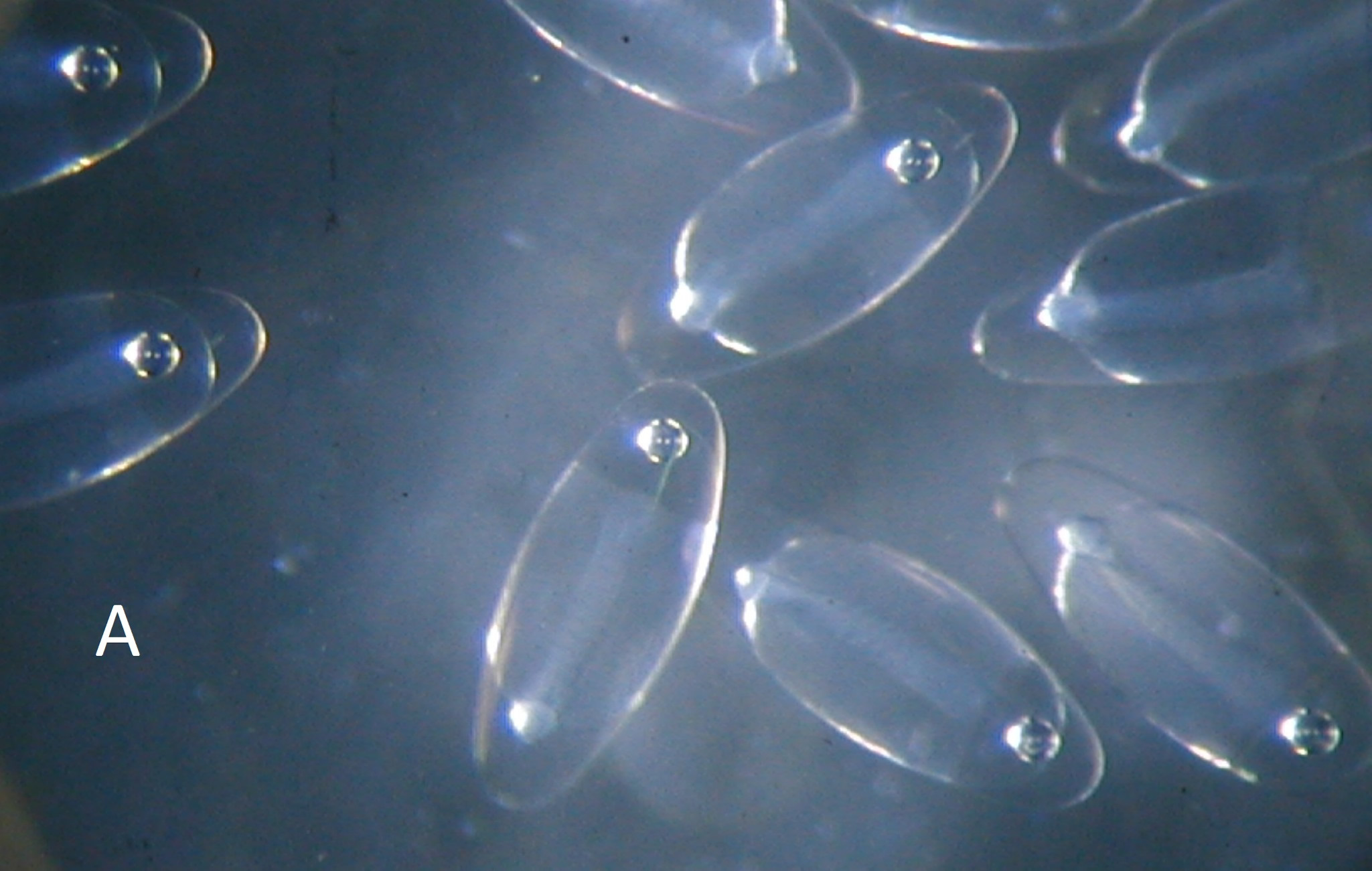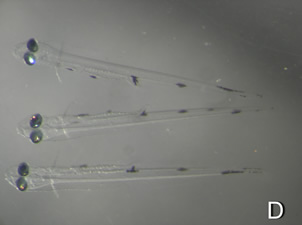Scaridae: BK III A2
Scarus rubroviolaceus Bleeker 1847 & S. ghobban Forsskal, 1775.
Ember parrotfish & Bluebarred parrotfish




Egg diameter in µm |
Number of oil globules |
Diameter of oil globule in µm |
Yolk texture |
Perivitelline space |
Position of oil globule at hatch |
Gut length at eye- pigment stage |
Myomeres |
1455 x 500 |
1 |
120 |
clear |
narrow |
bow |
50% of NL |
25(12) |
Egg: The uniquely elongate, oval egg shape of parrotfishes, make this species instantly recognisable. The yolk has a slightly rough surface. The egg is particularly difficult to see in a bowl of seawater, because it floats with the oil globule up, and quickly becomes trapped in the meniscus on the edge of the bowl. Before hatching, no pigment is visible on the developing embryo.
Larva: The newly hatched larva is elongate, with a moderately long gut, at about 50% NL (B). The 4-day larva develops distinct black pigment patches ventrally on the gut, at the anus, ventrally on the notochord post-anus, and dorsally near the notochord tip (D). B: NH, C: 4 days.
No attempt was made to rear this species. Six larvae, hatched from eggs, have been sequenced; 4 match the sequence of 4 locally collected adult S. rubroviolaceus, and 2 match the sequences of 2 locally collected S. ghobban (BOLD). Subtle differences in shape might separate eggs of these two species, but has not been attempted.


This egg was common in the Park Rynie samples (Introductory notes, Section 7, Table 3), but was only seen in three of the DHM samples, on each occasion represented by a single egg. The species spawns throughout the year, but with a definite summer peak (blue graph). The egg was a little less common in samples in 2001-2003 (white graph), but this may be due to an unfortunate error, of replacing a major panel in my net (my fault, I sew my own nets!), with netting which was 500µm, instead of 300µm, whereby collection of this and other eggs with a diameter near 500µm, was compromised, over the period March 2001 to December 2003, when the error was detected (see also BDIIIA1 and LIIIG7).
The eggs were more common in the offshore portion of the Park Rynie linked samples (71%), indicating spawning in the vicinity of the kob Argyrosomus japonicus, around the 30-40m depth contours. See Section 7.3 and Table 1 of the Introductory Notes, for more information on the linked samples.
linked samples |
Offshore |
Inshore |
Eggs |
3885 |
1579 |
Hits |
81 |
55 |